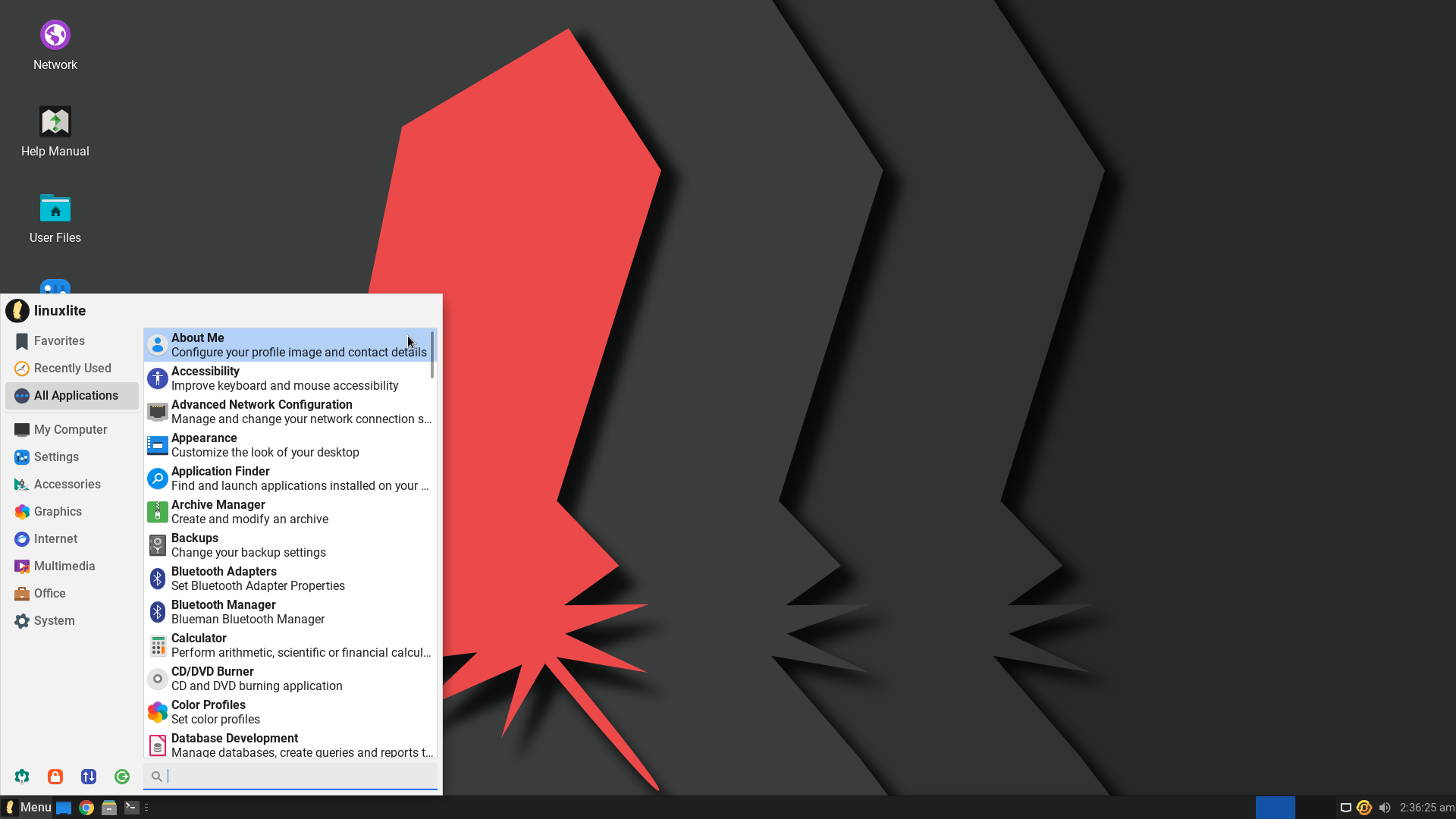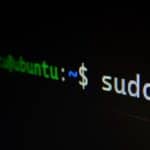Linux users often need to make exact copies of their hard drives, a process known as cloning. Cloning helps with backups or moving data to a new drive. Linux has several easy methods for cloning a hard drive, making it a reliable way to create an exact copy of your system. The dd command is a powerful and flexible tool for this task. However, be careful when using dd. Always double-check your drive names. You might also consider alternative tools that are more user-friendly.
It’s important to have a complete backup strategy. This should include regular backups, incremental backups, offsite storage, and periodic testing to keep your data safe. Cloning copies everything on the drive, including the operating system and files. This is useful for creating a full backup or moving your setup to a larger drive.
Linux has built-in tools that make cloning simple and quick. You can choose from command-line options or user-friendly programs with graphical interfaces. Some popular tools are dd, Clonezilla, and Partimage. Each tool offers different features to meet various needs.
Cloning a Hard Drive in Linux: Creating an Exact Copy
Want to create an exact replica of your Linux hard drive? Cloning is a useful technique for backing up your entire system, migrating to a new drive, or setting up identical systems. This guide provides a clear and concise walkthrough of how to clone a hard drive in Linux using the dd command.
Understanding the `dd` Command
dd is a powerful command-line utility in Linux that can copy and convert data at a low level. It’s often used for tasks like creating bootable USB drives, backing up partitions, and, of course, cloning entire hard drives.
Before You Begin
- Identify the Source and Destination Drives: Use the
lsblkcommand to list all connected drives. Note the device names for the source drive (the one you want to clone) and the destination drive (the target drive). - Ensure Sufficient Space: The destination drive must have equal or greater capacity than the source drive.
- Backup Important Data: Cloning will overwrite the destination drive. Back up any important data on the destination drive before proceeding.
Cloning the Drive
- Open a Terminal: Launch a terminal window.
- Run the
ddCommand: Use the following command, replacing/dev/sdawith the source drive and/dev/sdbwith the destination drive:
sudo dd if=/dev/sda of=/dev/sdb bs=64K conv=noerror,sync status=progressif=/dev/sda: Specifies the input file (source drive).of=/dev/sdb: Specifies the output file (destination drive).bs=64K: Sets the block size for faster copying.conv=noerror,sync: Continues copying even if errors occur and pads bad blocks with zeros.status=progress: Displays the progress of the cloning process.
- Wait for Completion: The cloning process can take a considerable amount of time, depending on the size of the hard drive.
- Verify the Clone: Once the process is complete, you can verify the clone by comparing the contents of both drives.
Important Notes
- Administrative Privileges: You’ll need root privileges to use the
ddcommand. - Caution: Double-check the source and destination drive names to avoid accidentally overwriting the wrong drive.
- Alternative Tools: For a more user-friendly approach, consider using graphical cloning tools like Clonezilla or GParted.
Creating Backups in Linux: Essential Strategies for Data Protection
Cloning your hard drive is just one approach to backing up your data. Here are some other essential backup strategies for Linux:
- Regular Backups: Establish a regular backup schedule (e.g., daily, weekly, monthly) to protect against data loss.
- Incremental Backups: Back up only the changes since the last full backup to save time and storage space.
- Offsite Backups: Store backups in a separate location (e.g., external hard drive, cloud storage) to protect against physical damage or theft.
- Test Your Backups: Periodically test your backups to ensure they can be restored successfully.
- Backup Tools: Explore various backup tools available in Linux, such as rsync, Deja Dup, and Timeshift.
Understanding the Basics of Hard Drive Cloning
Hard drive cloning creates an exact copy of a disk. It’s useful for backups and moving data to new drives. Let’s look at what cloning is, how it differs from imaging, and why it’s helpful.
What Is Disk Cloning?
Disk cloning makes an exact copy of a hard drive. It copies all data, including the operating system, programs, and files. The clone can replace the original drive if needed.
Cloning creates a working copy of the entire disk. This copy can be used right away. It’s different from a simple file backup. A clone includes everything, even hidden system files.
Cloning is often done when upgrading to a bigger drive. It’s also useful for making full backups. With a clone, you can quickly switch to the backup if your main drive fails.
Differences Between Disk Cloning and Disk Imaging
Disk cloning and imaging are similar but not the same. Cloning makes a direct copy to another drive. Imaging creates a file of the disk contents.
A clone is ready to use. An image file needs to be restored first. Cloning is faster for full drive copies. Imaging is better for storing backups.
Images can be compressed to save space. Clones take up the full size of the original. Images are more flexible. They can be stored on various media. Clones need a drive of equal or larger size.
Advantages of Cloning a Hard Drive
Cloning offers several benefits for data safety and system management. It provides a complete backup of your system. This makes recovery quick and easy if something goes wrong.
Cloning your hard drive helps when upgrading. You can move your entire system to a new, larger drive. This saves time setting up the new drive from scratch.
For businesses, cloning speeds up computer deployment. One master system can be cloned to many computers. This ensures all systems have the same setup and software.
Clones are also useful for testing. You can experiment with system changes on the clone. The original drive stays safe and untouched.
Preparation Before Cloning
Getting ready to clone a hard drive on Linux takes a few key steps. These steps help ensure a smooth and successful cloning process.
Selecting the Appropriate Software
Linux offers several tools for hard drive cloning. Popular options include:
- dd: A built-in command-line tool
- Clonezilla: A bootable cloning software
- GParted: A graphical partitioning tool with cloning features
Each tool has its strengths. dd is good for exact copies. Clonezilla works well for cloning entire drives. GParted is user-friendly for those who prefer a visual interface.
Choose based on your needs and skill level. Consider factors like ease of use and the type of clone you need.
Assessing Hard Drive Health
Check the health of both source and target drives before cloning. This helps prevent data loss or corruption. Use these steps:
- Run a SMART test to check drive health
- Look for bad sectors or other issues
- Replace drives with signs of failure
Linux tools like smartctl can help assess drive health. It’s part of the smartmontools package. Install it using your package manager.
Regular health checks can catch problems early. This is vital for system admins managing many drives.
Ensuring Data Integrity
Protect your data during the cloning process. Take these steps:
- Back up important files to a separate device
- Verify the backup to ensure all data copied correctly
- Use checksums to confirm file integrity
Cloning tools with error checking can help spot issues. For example, the dd command can use the “conv=noerror,sync” option. This keeps the clone going even if it hits read errors.
Also, make sure you have enough space on the target drive. A full clone needs at least as much space as the source drive uses.
Choosing the Right Tool for Cloning
Several tools are available for cloning hard drives in Linux. Each has its own strengths and works best with certain filesystems. Let’s look at the top options and how to pick the best one for your needs.
Comparison of Cloning Tools
Linux offers many tools for disk cloning. Here’s a quick look at some popular choices:
- Clonezilla: Free and open-source. Works with many filesystems.
- Partimage: Good for older systems. Doesn’t support some newer filesystems.
- Partclone: Fast and efficient. Supports most modern filesystems.
- Fsarchiver: Backs up files and folders instead of whole partitions.
These tools differ in speed, ease of use, and the types of systems they work with. Clonezilla is often seen as the best all-around choice for most users. It’s easy to use and works with many different setups.
Clonezilla and Its Alternatives
Clonezilla is a top pick for Linux disk cloning. It’s free, works with many filesystems, and can clone to a new drive or create a backup image file.
Some good alternatives to Clonezilla are:
- dd: A basic command-line tool that comes with most Linux systems.
- Partimage: Best for older systems or those with simple setups.
- Partclone: Faster than dd and works well with modern filesystems.
Each tool has its pros and cons. dd is simple but slow. Partimage is user-friendly but doesn’t support all filesystems. Partclone is fast but may be harder for beginners to use.
Assessing Compatibility with Filesystems
Different cloning tools work better with certain filesystems. Here’s a quick guide:
- ext2/3/4: All major tools support these common Linux filesystems.
- NTFS: Clonezilla and Partclone work well. Partimage has limited support.
- FAT32: Most tools can handle this simple filesystem.
- Btrfs: Clonezilla and Partclone are good choices. Others may not work.
- XFS: Clonezilla and Partclone support it. Partimage does not.
Check your filesystem type before picking a tool. Use the “df -T” command in Linux to see what filesystem you’re using. This helps ensure you choose a tool that will work with your setup.
Cloning Process Step-by-Step
Cloning a hard drive in Linux involves several key steps. These include creating a bootable device, starting the cloning software, picking the drives, and adjusting settings.
Creating a Bootable Live USB/CD
To start, you need to make a bootable USB or CD. This will let you run the cloning software without using your main system.
First, download a Linux live system like Clonezilla Live. Next, use a tool like Etcher or dd to write the image to your USB drive.
Make sure to back up any data on the USB drive before you start. The process will erase everything on it.
Once done, your bootable device is ready. You can now use it to start the cloning process.
Starting the Cloning Software
Now it’s time to boot from your live USB or CD. Restart your computer and enter the boot menu. This is often done by pressing a key like F12 during startup.
Pick your bootable device from the list. Your computer will then load the live system.
Once loaded, you’ll see options for different cloning tools. Clonezilla is a popular choice. Select it to begin.
The software will ask some basic questions. These might include your language and keyboard layout. Answer them to proceed.
Selecting Source and Destination Drives
In this step, you’ll pick which drive to clone and where to put the copy.
The source drive is the one you want to clone. This is often your main hard drive with your operating system and data.
The target drive is where you want to put the clone. This could be a new hard drive or an external drive.
Be very careful when selecting drives. Picking the wrong one could lead to data loss.
Clonezilla will show you a list of all connected drives. It will give details like size and model number to help you choose.
Adjusting Clone Settings
Before starting the clone, you can tweak some settings. These affect how the clone is made and what’s included.
You can choose to clone the whole drive or just certain partitions. Cloning the whole drive is often simpler and safer.
There are options for how to handle the file system. If you’re using Ext4, make sure this is supported.
You can also pick compression settings. This can save space but might make the process slower.
Some tools let you clone over a network. This is useful if you can’t connect both drives to the same computer.
After setting everything up, double-check your choices. Then start the cloning process and wait for it to finish.
Using the ‘dd’ Command for Cloning
The ‘dd’ command is a powerful tool for cloning hard drives in Linux. It copies data bit by bit from one disk to another. This method works for both full disk cloning and partition cloning.
Syntax and Parameters of ‘dd’
The basic syntax of the ‘dd’ command is:
dd if=/dev/source of=/dev/destination bs=64K
Here’s what each part means:
- ‘if’ is the input file (source disk)
- ‘of’ is the output file (destination disk)
- ‘bs’ is the block size
The block size affects how fast ‘dd’ works. A larger block size often speeds up the process.
Other useful parameters include:
- ‘conv=noerror’ to continue copying if errors occur
- ‘sync’ to fill input blocks with zeroes if there’s an error
Avoiding Common Pitfalls with ‘dd’
‘dd’ can be dangerous if used wrongly. Here are some tips to stay safe:
- Double-check the ‘if’ and ‘of’ values. Mixing them up can erase your source disk.
- Use whole disk names (like /dev/sda) not partition names (like /dev/sda1) for full disk clones.
- Make sure the destination disk is at least as big as the source.
- Don’t use the destination disk while cloning.
It’s best to boot from a live Linux USB when cloning system disks. This prevents data changes during the process.
Monitoring ‘dd’ Cloning Progress
By default, ‘dd’ doesn’t show progress. This can be nerve-wracking for large disks. To see progress, use the ‘status=progress’ option:
dd if=/dev/sda of=/dev/sdb bs=64K status=progress
This shows how much data has been copied and the transfer speed.
For older versions of ‘dd’ without this option, you can use the ‘pv’ command:
dd if=/dev/sda | pv | dd of=/dev/sdb
This shows a progress bar and estimated time remaining.
Post-Cloning Considerations
After cloning a hard drive on Linux, several steps are needed to ensure the clone works correctly. These include checking the copy, making it bootable, and fixing any errors.
Verifying the Clone
Checking the clone is key to make sure it matches the original drive. One way to do this is with the “diff” command. It compares the two drives and shows any differences.
To use diff, type:
sudo diff /dev/sda /dev/sdb
Replace sda and sdb with the right drive names.
Another option is to use the “md5sum” tool. It creates a unique code for each drive. If the codes match, the clone is good.
To use md5sum:
Make a code for the original drive:
sudo md5sum /dev/sda > original.md5Make a code for the cloned drive:
sudo md5sum /dev/sdb > clone.md5Compare the two codes:
diff original.md5 clone.md5
If there’s no output, the clone is correct.
Making the Clone Bootable
To boot from the cloned drive, a few more steps are needed:
Update the bootloader:
If using GRUB, run:sudo update-grubFix the UUID:
Each drive has a unique ID. To change it on the clone:sudo tune2fs -U random /dev/sdb1Update /etc/fstab:
This file tells the system which drives to use. Edit it with:sudo nano /etc/fstabReplace the old UUID with the new one.
Install the bootloader on the cloned drive:
sudo grub-install /dev/sdb
After these steps, the cloned drive should be bootable.
Handling Cloning Errors
Errors can happen during cloning. Here are some common issues and fixes:
Input/output errors:
These often mean bad sectors on the drive. Try using the “dd_rescue” tool instead of “dd”. It can skip bad sectors.Not enough space:
Make sure the target drive is at least as big as the source drive.Permission denied:
Run the cloning command with “sudo” to get the needed permissions.File system errors:
Use “fsck” to check and fix file system issues:sudo fsck /dev/sdb1
If errors keep happening, the source drive might be failing. In this case, it’s best to back up important data before trying to clone again.
Advanced Cloning Techniques
Cloning hard drives on Linux can be done in many ways. These methods help with different needs like copying over networks or handling big drives.
Cloning Over a Network
Network cloning lets you copy a drive to a remote computer. This is useful for backups or setting up many computers at once. To do this, you’ll need tools like Clonezilla or dd with ssh.
Here’s a basic example using dd and ssh:
dd if=/dev/sda | ssh user@remote_host "dd of=/dev/sdb"
This command copies the local drive to a remote one. Make sure you have enough space and a fast network.
For better speed, you can use compression:
dd if=/dev/sda | gzip -c | ssh user@remote_host "gunzip -c | dd of=/dev/sdb"
This makes the transfer faster but uses more CPU power.
Automating the Cloning Process
You can make cloning easier by using scripts. This helps when you need to clone many drives or do it often.
Here’s a simple bash script to clone a drive:
#!/bin/bash
SOURCE="/dev/sda"
TARGET="/dev/sdb"
dd if=$SOURCE of=$TARGET bs=4M status=progress
Save this as “clone.sh” and run it with sudo. You can add more checks and options to make it safer and more flexible.
For regular backups, you can use cron jobs. This lets you schedule cloning tasks to run at set times.
Handling Large Drives and Partitions
Big drives take a long time to clone. There are ways to make it faster and safer.
Use a larger block size with dd:
dd if=/dev/sda of=/dev/sdb bs=1M
This speeds up the process but uses more memory.
For very large drives, consider using partimage. It can skip empty space and compress data:
partimage save /dev/sda1 /path/to/image.img
This creates an image file of just the used space on the partition.
You can also use LVM snapshots for live cloning. This lets you clone a drive while it’s in use:
lvcreate -L10G -s -n backup /dev/vg0/root
This creates a snapshot you can then copy safely.
Troubleshooting Common Issues
Cloning hard drives can sometimes hit snags. These tips will help fix the most frequent problems.
Dealing with Filesystem Incompatibilities
Different filesystems can cause issues when cloning. Linux supports many types like XFS, Btrfs, and NTFS. But they don’t always play nice together.
To fix this:
- Check both drives’ filesystems before cloning
- Use tools that support your specific filesystems
- Convert filesystems if needed before cloning
For NTFS drives, use ntfs-3g to mount them in Linux. This lets you read and write Windows partitions.
Btrfs and XFS need special care. They have unique features not found in other filesystems. Make sure your cloning tool can handle them.
Resolving Drive Size Mismatches
When the new drive is a different size than the old one, problems can pop up.
If the new drive is smaller:
- Shrink partitions on the old drive first
- Then clone to the new drive
If the new drive is bigger:
- Clone the old drive
- Expand partitions to use extra space
Use GParted to resize partitions safely. It works with many filesystem types.
For exact copies, pick a new drive the same size as the old one. This avoids sizing headaches.
Addressing Cloning Software Errors
Cloning tools can sometimes fail or give errors. Here’s how to tackle common issues:
“Input/output error”: This often means bad sectors on the old drive. Use ddrescue to recover data from failing drives.
“No space left on device”: Check that the new drive has enough room. Delete unneeded files on the source if needed.
Slow cloning speed: Try a larger block size (bs) with dd. This can speed things up.
Incomplete clone: Verify the clone finished. Some tools have built-in checks. Or use diff to compare drives.
If errors persist, try a different cloning tool. Clonezilla is a good backup option if dd or other tools fail.
Maintaining Your Cloned Drives
Keeping cloned drives in good shape takes some work. Regular backups, updates, and performance checks help keep your data safe and systems running well.
Scheduling Regular Backups
Set up a backup plan to protect your data. Pick a time that works for you, like once a week or month. Use tools like rsync or Timeshift to copy files easily.
Store backups in a safe place. Keep them away from your main computer. This helps if something bad happens to your main system.
Test your backups now and then. Try to open files or boot from the backup. This makes sure they work when you need them.
Updating Cloned Systems
Keep cloned systems up to date. This helps them stay secure and work well.
Check for updates often. Use your Linux system’s update tool. Apply security patches right away.
If you change settings on your main system, do the same on clones. This keeps them the same.
Be careful with big updates. They might cause problems with cloned systems. Test updates on one system first before doing them all.
Optimizing Drive Performance
Take care of your drives to keep them fast and healthy.
Check drive health with tools like S.M.A.R.T. They can warn you about problems early.
Clean up old files you don’t need. This frees up space and can help speed things up.
Run disk checks now and then. They can find and fix small issues before they get big.
If a drive starts to slow down, think about replacing it. Drives don’t last forever. It’s better to replace them before they break.
Frequently Asked Questions
Cloning a hard drive in Linux involves several methods and considerations. Users often have questions about specific tools, drive sizes, and procedures.
What are the steps to clone a hard drive using command line tools in Linux?
To clone a hard drive with command line tools:
- Connect the source and target drives
- Identify the drives using “sudo fdisk -l”
- Use the “dd” command to copy data
- Verify the cloned drive
The basic “dd” command format is: dd if=/dev/sda of=/dev/sdb bs=64K conv=noerror,sync
How can I clone a Linux disk to a larger drive without data loss?
Cloning to a larger drive is simple:
- Use a tool like Clonezilla
- Select the source and target drives
- Choose the cloning method
- Let the tool handle resizing
The new drive will have extra unallocated space after cloning.
What is the procedure for cloning a Linux hard drive to a smaller SSD?
To clone to a smaller SSD:
- Shrink partitions on the source drive
- Use a cloning tool like dd or Clonezilla
- Select source and target drives
- Start the cloning process
Ensure the data fits on the smaller drive before starting.
Can one perform disk cloning in Linux using a graphical user interface, and if so, how?
Yes, Linux offers GUI tools for disk cloning:
- Boot into a live Linux environment
- Open GParted
- Select the source partition
- Choose “Copy”
- Select the target partition
- Click “Paste”
GParted provides a user-friendly way to clone partitions.
Is it possible to clone a Linux hard drive to a drive of a different size using the ‘dd’ command?
Yes, the ‘dd’ command can clone to different sized drives:
- For larger targets, use dd normally
- For smaller targets, shrink source partitions first
- Use the basic dd command: dd if=/dev/sda of=/dev/sdb bs=64K
Be careful when cloning to smaller drives to avoid data loss.
What guidelines should be followed when using Clonezilla to clone a Linux hard drive?
When using Clonezilla:
- Boot from a Clonezilla live USB
- Choose “device-image” for full drive cloning
- Select the source drive
- Pick the target drive or save location
- Follow on-screen prompts
Clonezilla offers a safe and easy way to clone entire drives.






